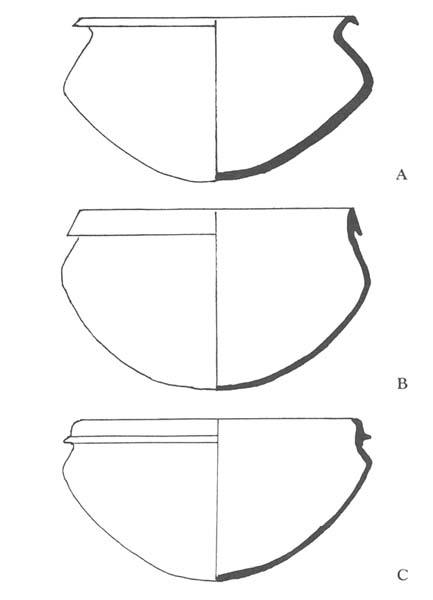Image Details

Small changes, important ramifications. The drawing charts a subtle evolution in pottery styles that bolsters, some archaeologists believe, the theory that the Israelites entered Canaan from Transjordan, settled first in the eastern Canaanite hill country and then migrated west. The left half of each drawing shows the intact vessel as seen from outside; the right half shows the pot as if it had been sliced vertically, with the width of the wall indicated in thick black. The first type of vessel (top), common during the late 13th and early 12th century B.C.E., is marked by an everted triangular rim. The middle pot, which flourished in the mid- to late-12th century, features a less pointy, tongued rim. The third type, appearing in the 11th century, bears a long tongue on the rim.
Adam Zertal believes that the earliest type of pottery is more common in the eastern Canaanite hill country and that the later types are more common in the central and western sections of the highlands. Zertal sees this as evidence of Israelite migration. William Dever counters that even according to Zertal’s own findings, no such movement can be attributed to the pottery record. If any early pottery types—even if they were not the dominant style—were present at a site, Dever emphasizes, that site must have been settled during the earlier period. A straightforward east-to-west migration theory, Dever says, is therefore no longer tenable.
